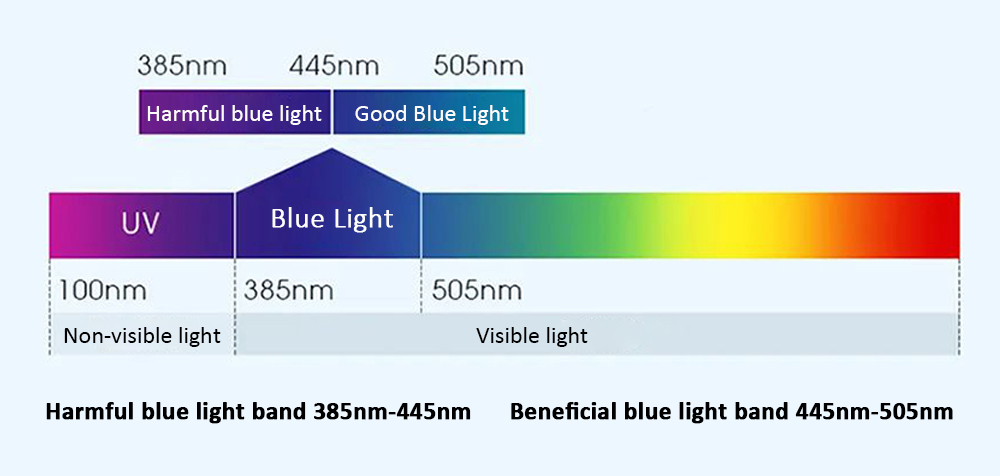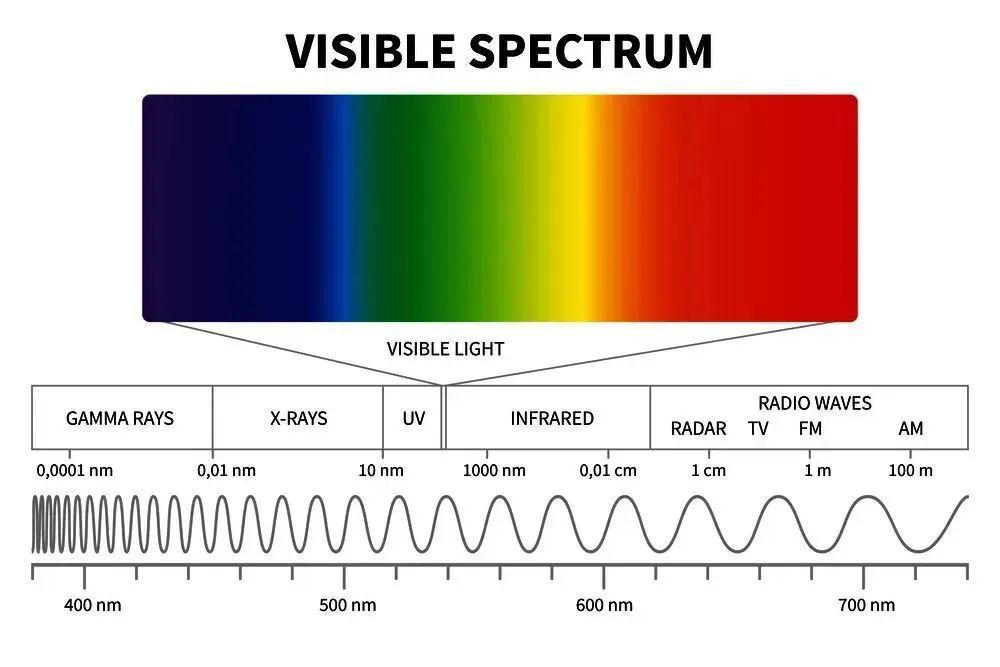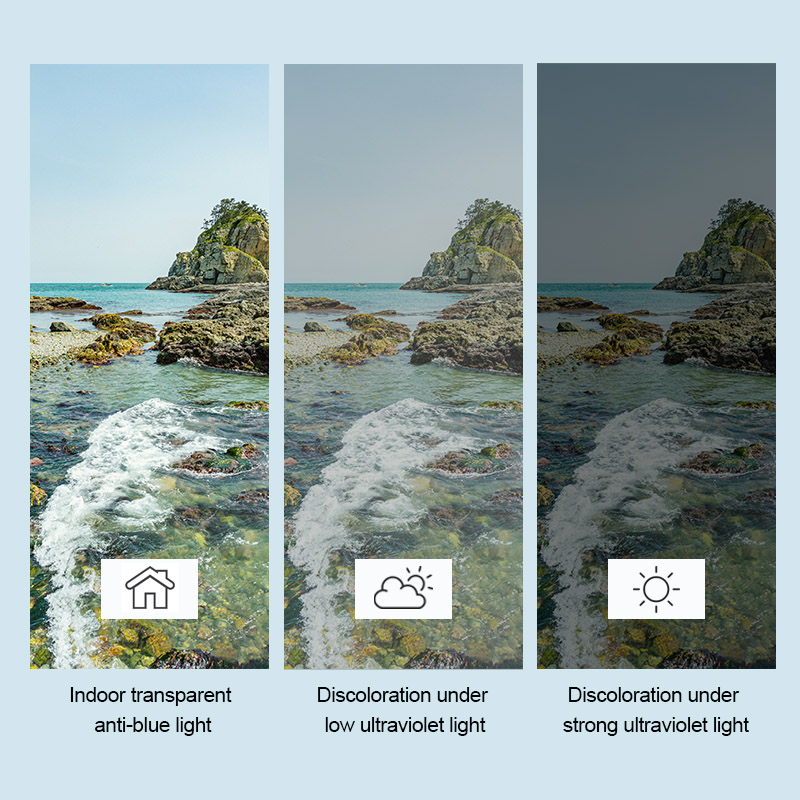With the intense sunlight of summer, stepping outside often triggers an automatic squint reaction. Prescription sunglasses have recently become a booming revenue growth point in the eyewear retail industry, while photochromic lenses remain a steadfast guarantee of summer sales. The market and consumers' acceptance of photochromic lenses stem from their style, light protection, and suitability for driving among various other needs.
1.Why is visual protection necessary?
Ultraviolet light can be simply divided into UVA, UVB, and UVC:
UVC has a shorter wavelength and is absorbed by the ozone layer in the atmosphere, so it is not a concern.
UVB, the medium-wave ultraviolet light, can damage skin cells through photochemical reactions, causing erythema and sunburn.
UVA, the long-wave ultraviolet light, directly causes the skin to tan quickly without burning, but it also leads to conditions like keratitis.
On the Earth's surface, long-wave ultraviolet light makes up 97% of UV exposure. Thus, protection against UVA and UVB in daily life is crucial.
Another hazard is glare. In clear weather, especially in summer, glare not only affects clarity of vision but also causes eye fatigue.
Given this background, the importance of choosing photochromic lenses that provide both vision correction and light protection is self-evident.


2.Can everyone wear photochromic lenses?
Firstly, note the following groups who are not suitable for photochromic lenses:
Young myopic children (under 6 years old) whose eyes are still developing may be affected by long-term wear.
People with glaucoma need bright light. Wearing sunglasses reduces light exposure, which can dilate the pupils, increase eye pressure, and cause pain.
People with optic neuritis, as wearing photochromic lenses could worsen inflammation due to poor nerve conduction.
UV light is always present, regardless of the season or weather. Aside from the groups mentioned above, photochromic glasses are suitable for everyone else.
3.Why are gray lenses the most common on the market?
Gray lenses can absorb infrared and 98% of UV rays. The main advantage of gray lenses is that they do not alter the original colors of the surroundings, effectively reducing light intensity. Gray lenses provide balanced absorption across all spectrums, so objects appear darker but without significant color distortion, offering a true-to-nature view. Additionally, gray is a neutral color suitable for everyone, making it more popular.
4.Advantages of clear-base, anti-blue light photochromic lenses?
Suitable for various life scenarios, seamlessly switching between indoors and outdoors, serving dual purposes.
Indoors/nighttime they are clear and transparent, outdoors they darken, offering dual protection against UV rays and harmful blue light, relieving fatigue.
Excellent film-changing technology ensures rapid and stable color transition; nano anti-blue light technology keeps lenses clear and non-yellowing, ensuring comfortable vision.
As the saying goes, "To do a good job, one must first sharpen one's tools." Material support: photochromic samples, props, and lightbox posters assist in promoting photochromic lenses.
Comfort, protection, and convenience are three points that need to be reinforced repeatedly when communicating with consumers.

5.Are clear-base, anti-blue light photochromic lenses more suitable for stocking?
One of the hottest topics in eye health right now is blue light protection, and functional lenses with anti-blue light capabilities are very popular with consumers. UV damage is a year-round concern but is particularly pronounced in the hot summer months, so the demand for photochromic lenses is long-term.
Although photochromic lenses are available in various colors, gray lenses are best suited for stocking. Outdoors, deep gray is the most comfortable color for the eyes; they match fashionably with any eyeglass frame, making them a versatile choice for photochromic colors.
Given the choice of multiple refractive indices, 1.56 and 1.60 refractive index photochromic lenses sell best in stores. Increasing the sales ratio of Safety Guard 1.60 clear-base anti-blue light photochromic lenses not only helps increase the average order value but also has clear advantages that facilitate transactions. For more inventory policies and after-sales support for Safety Guard clear-base anti-blue light photochromic lenses, please consult a sales representative.
6.Functions of different colors of photochromic lenses?
| Tea Color | Effectively improves visual contrast and clarity, works well in highly polluted or foggy conditions, and is an ideal choice for drivers and high-prescription patients. |
| Gray | Effectively reduces light intensity, high color restoration, true-to-life vision, suitable for all users. |
| Pink/Purple | Filters stray light, blocks strong light and softens it, can also help relax and relieve stress, and is a fashion accessory for women's everyday outfits. |
| Blue: | Effectively absorbs stray light visible to the eyes, helping to alleviate visual fatigue. It is the preferred choice for beach outings. |
| Yellow | Enhances visual contrast in foggy environments and at dusk, making vision clearer. Can be used as night vision glasses, especially suitable for drivers. |
| Green | Increases the amount of green light reaching the eyes, relieves overuse of eyes, suitable for people with eye fatigue. |
When choosing recommended colors, consider the functional features of the lenses, the purpose of the glasses, and the customer's color preferences.
Post time: May-07-2024





